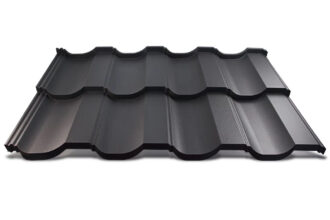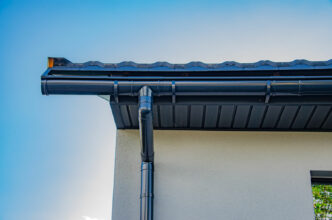Store-bought vegetables are often disappointing in quality and not worth the price. As a result, more and more people are choosing to grow their own vegetables. This solution saves money and guarantees a healthy and fresh crop at your fingertips! Learn how to create a thriving vegetable garden in your own backyard.
Vegetable garden – planning and site selection
Before planning your vegetable garden, consider your goals and expectations. Do you want to grow just a few of your favourite vegetables or a large, varied garden? Are you planning to grow organically, or do you prefer traditional methods? The answers to these questions will help you plan your next steps.
To grow vegetables effectively, it is important to choose the correct location. Here are some factors to consider:
- Sun exposure – most vegetables need at least 6-8 hours of sunlight a day;
- Water access – make sure that the site you choose has easy access to water, which will make it easier to water your plants;
- Soil quality – check that the soil is fertile and well drained. If necessary, carry out a soil analysis to determine fertiliser needs.
Once you have chosen a suitable site for your vegetable garden, think about its layout. Things to keep in mind:
- Size and shape of beds – traditional beds are usually about 1-1.2 metres wide to allow easy plant access. You can adjust the length of the beds to suit your needs.
- Bed spacing – Leave at least 40-60 cm between beds to allow for unrestricted movement when tending them;
- Crop placement – consider the height and light needs of the plants and plant taller plants on the north side so that they do not obscure lower plants.
What are the best vegetables to grow in the garden?
Growing vegetables in a home garden depends on individual preferences, space availability and local climatic conditions. Which vegetables are healthy, tasty and easy to grow?
- Tomatoes,
- peppers,
- cucumbers,
- lettuce,
- carrot,
- beetroot,
- onions,
- cauliflower and broccoli,
- beans and peas,
- spinach and kale.
Of course, these vegetables can be grown in a variety of ways, depending on taste preferences and space availability. It’s a good idea to try out different vegetable varieties and species to find out which ones work best in your home garden!
How do you look after the vegetables in your own garden?
To get a healthy and bountiful harvest from your own vegetable garden, you must take good care of your plants. What should you pay particular attention to?
- Watering – Vegetables need regular watering to grow and fruit properly. Keep the soil moist at all times, avoiding over-drying or over-watering. Vegetables are best watered in the morning or evening to reduce water evaporation. Adjust the frequency and amount of watering according to individual plant needs and weather conditions.
- Fertilisation – Carry out a soil analysis before the start of the growing season to determine its fertiliser needs. Use organic fertilisers such as compost, manure or green manure to give your plants the necessary nutrients. Mineral fertilisers should be used in moderation, according to the manufacturer’s recommendations and the crop’s needs. Do not over-fertilise, as this can lead to excessive leaf growth at the expense of the fruit and weaken the plants.
- Disease and pest protection – choose healthy and resistant plant varieties adapted to local conditions. Use crop rotation, i.e., changing individual crops’ locations to avoid soil depletion and disease outbreaks. Check the plants regularly and remove any diseased or damaged parts. Use natural pest control methods, such as introducing physical barriers or biological agents.
- Weeds – regularly remove weeds that compete with vegetables for space, nutrients and water. Use mulch, which means covering the soil with a layer of organic material (e.g. straw, bark or grass). This effectively reduces weed growth, retains moisture and improves soil structure. Try to avoid the use of herbicides, which can affect plant and soil health.
- Pruning and rewiring – some plants, such as tomatoes and peppers, require pruning to improve tillering and fruiting. Tie-down climbing plants and those with heavy fruit to give them proper support and development.
Main cultivation methods
In a home garden, you can use various cultivation methods to grow plants efficiently and use the available space best. One of the most popular methods is traditional cultivation, where plants are grown directly in the soil in prepared beds. It is the most common and natural cultivation method and requires no special tools or equipment.
Container growing is the perfect solution for people who have limited space but want to enjoy fresh vegetables in their own garden. You can grow plants in pots, boxes, bags or any other type of container. This method makes it easy to monitor soil and irrigation conditions and to move plants if necessary.
An interesting technique is vertical cultivation, which saves a lot of space. In this variant, vegetables grow on vertical structures such as trellises, grids, pergolas or pallets. This is particularly effective for climbing plants such as beans, peas and pumpkins. Such a garden would also work well on a balcony in a block of flats!
Raised beds are also a popular method. These are earth-filled structures that are raised above ground level. They make plant care easier, increase water retention and warm up more quickly in the spring, allowing earlier planting. The height of the beds can be adjusted according to your needs and possibilities.
Want to grow a wide variety of vegetables? Consider growing in a square system.
This method divides the garden into smaller 30-cm squares, each with a different plant. Such a system makes efficient use of space, facilitates crop management and control, and allows easy introduction of crop rotation.
An exciting way of growing vegetables is the so-called companion planting. This system involves growing plants that have a beneficial effect on each other. Examples include growing tomatoes with basil, carrots with onions or cabbage with parsley. The coexistence of these plants can improve their growth and flavour and protect them from pests and diseases.
Ready-made vegetable garden – is it a good investment?
Are you thinking of buying a ready-made vegetable garden? If so, rely on a proven and robust solution! The Hornval 03 vegetable garden is perfect for growing a variety of vegetables. The product is manufactured from coated sheet steel to ensure resistance to changing weather conditions. Notably, the garden is sold in a convenient modular form. You can design a vegetable garden with four separate panels and dowels to suit your needs!


